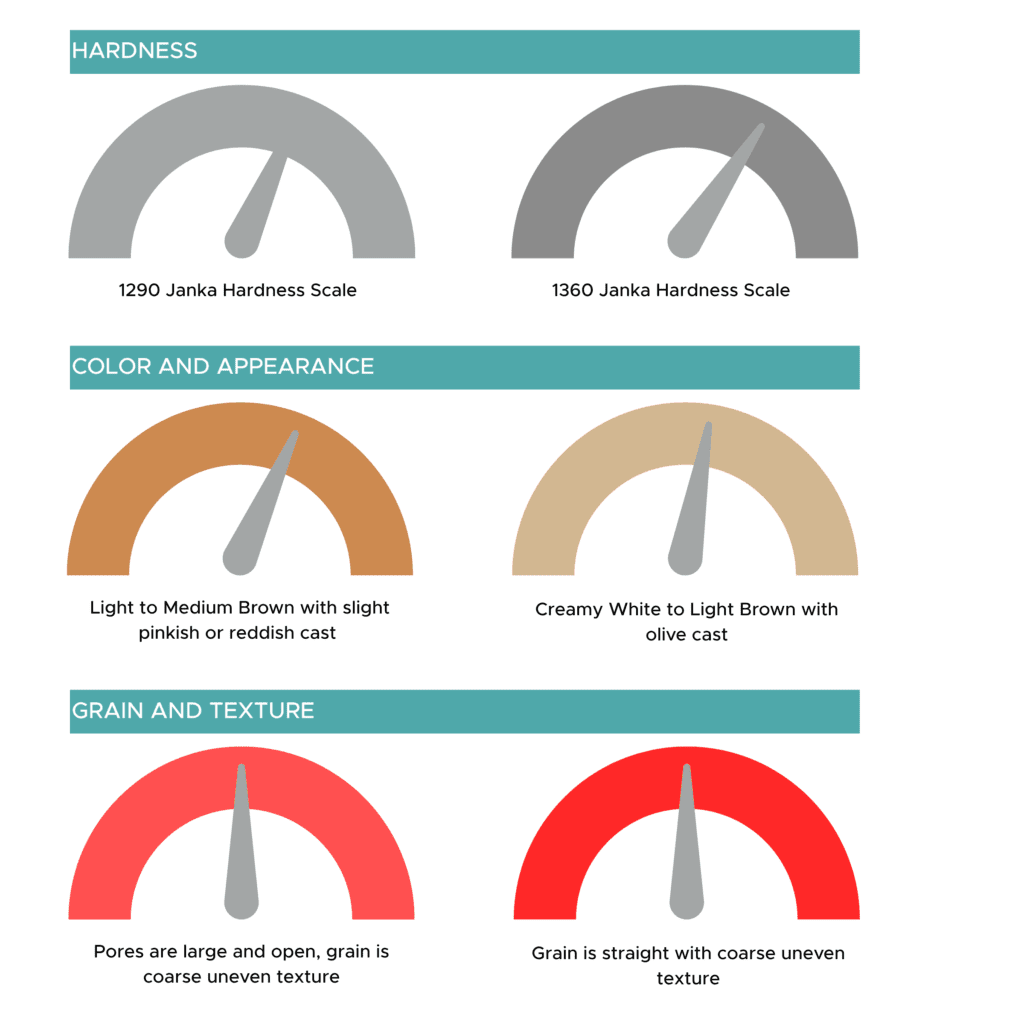red oak vs white oak

RED OAK vs white oak: choosing the right oak for your project
When selecting wood for commercial applications—especially for stair treads, flooring,or millwork — Red Oak and White Oak are two of the most trusted and widely used hardwoods in North America. Both species offer strength, reliability, and timeless aesthetics, but their performance characteristics differ in ways that can significantly impact long-term durability, maintenance, and cost in commercial environments.
When it comes to stair treads, two of the most popular hardwood options are Red Oak and White Oak. Both species are known for their strength, beauty, and timeless appeal, but each offers distinct characteristics that may make one a better fit for your specific needs, design goals, and budget.
Red Oak
Red Oak is easily recognized by its warm reddish-brown hue and prominent grain pattern that adds a sense of texture and depth to any interior. It’s a hard, durable wood capable of standing up to years of foot traffic, making it a reliable choice for high-use stairways.
One of Red Oak’s greatest advantages is its availability and cost-effectiveness. Because it’s widely grown and harvested across North America, it’s generally more affordable than White Oak, and matching new stair treads with existing Red Oak flooring is simple.
-
Color: Reddish-tan to medium brown tones with visible grain
-
Durability: Very good—resists dents and scratches under normal use
-
Workability: Easy to stain, sand, and finish
-
Cost: More budget-friendly and widely available
Overall, Red Oak remains a favorite for homeowners who want a classic look, dependable performance, and excellent value.
White Oak
White Oak is prized for its exceptional strength, density, and resistance to moisture. It has a lighter, more neutral color palette—typically light beige to medium brown—with subtle olive or gray undertones that give it a refined, modern appearance. Its tight grain structure not only contributes to its durability but also allows it to accept stains evenly, offering flexibility in design.
White Oak’s closed-grain composition makes it naturally more resistant to water and humidity than Red Oak, which is why it’s often used in high-end homes, commercial spaces, and even outdoor applications like decks and boat building.
However, White Oak is typically more expensive and harder to source, as global demand for this premium hardwood has risen significantly in recent years. White Oak is considered the higher-performance hardwood for demanding commercial projects. It is denser, harder, and more dimensionally stable than Red Oak, giving it exceptional resistance to wear, impact, and moisture. Its closed-grain structure prevents water penetration, making it ideal for high-traffic or high-moisture environments such as lobbies, staircases, entryways, and hospitality spaces.
-
Color: Light beige to medium brown with smooth, linear grain
-
Durability: Excellent—harder and more moisture-resistant than Red Oak
-
Workability: Slightly harder to cut but finishes beautifully
-
Cost: Higher due to demand and slower growth rate
-
Ideal for large-scale, design-focused commercial spaces
If you value longevity, a sophisticated appearance, and superior durability, White Oak is often worth the investment.
How to Choose Between Red Oak and White Oak
When deciding which wood is right for your stair treads, consider these key factors:
-
Aesthetic Preference:
-
Red Oak offers warmth and a more traditional look.
-
White Oak provides a cleaner, modern appearance that pairs well with a variety of design styles.
-
-
Budget:
-
Red Oak is typically more affordable and easier to find.
-
White Oak, while pricier, delivers higher durability and a premium finish.
-
-
Existing Flooring or Trim:
-
Match your stair treads to your current flooring for a seamless transition. Red Oak flooring pairs best with Red Oak treads, and the same applies to White Oak.
-
-
Durability and Use:
-
For high-traffic areas or homes where moisture resistance is important, White Oak’s density and closed grain give it the edge.
-
